
Japanese Killifish
Japanese Killifish
Japanese Killifish
Many people may be familiar with keeping Japanese killifish at school or at home as an easy pet. While they are common fish, few people know about their actual habits and characteristics. This time, let's delve deeper into the world of Japanese killifish.
Japanese Killifish Basic Infomation
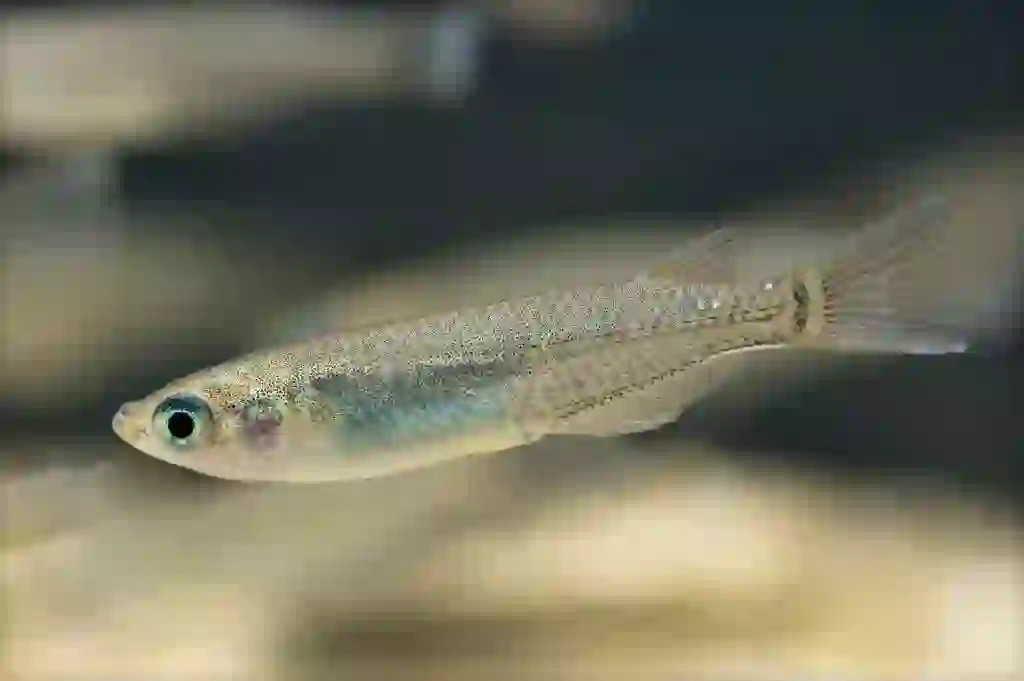
Order Cyprinodontiformes, Family Oryziidae, Genus Oryzias
Body length 3-4 cm, Weight 0.6g - 1g
There are two types of Japanese killifish in Japan: the Northern killifish and the Southern killifish.
The habitat of the Northern killifish is on the Sea of Japan side of Honshu, inhabiting the Tohoku and Hokuriku regions.
The habitat of the Southern killifish is on the Pacific side of Honshu, the Chugoku region, Shikoku, Kyushu, and the freshwater and brackish waters of the southwestern islands.
Although commonly perceived as ornamental fish, wild Japanese killifish are often seen in paddy fields, rivers, and canals.
Depending on the region, they are known by various local names, reflecting their close presence in people's lives.
Mostly, the Southern killifish, specifically bred for ornamental purposes, are sold in pet shops under the breed name 'Himedaka'.
Japanese killifish lay about ten eggs at a time during the spring to summer period, several times.
The eggs hatch in about ten days, and the fish grow from summer through autumn, survive the winter, and spawn again the following spring.
Japanese Killifish Q&A

What is the origin of the name 'medaka'?
The name 'medaka' comes from the fact that their eyes are positioned high on their body.
Their mouths also point upwards, which is said to facilitate the eating of water fleas at the water's surface.

Why do medaka live there?
The scientific name for medaka is 'Oryzias latipes', which means 'creature with wide feet around rice'.
As the scientific name suggests, medaka have a deep relationship with rice paddies.
The lifecycle of medaka, from birth to growth and laying eggs, closely resembles the agricultural cycle of planting rice in spring and harvesting in fall.
Medaka are freshwater fish that live in rice paddies and streams, but they are actually resilient to salinity and high temperatures, allowing them to survive in various environments.
However, because medaka are very small fish, they are quickly eaten in places with larger fish.
Therefore, wild medaka do not inhabit fast-flowing large rivers or large lakes.
For the small-bodied medaka, fast-flowing rivers can be harsh and deplete their energy.
Thus, medaka live in groups in places like irrigation channels, gentle streams, and areas with abundant water plants, where large fish cannot enter easily.

What do medaka eat?
Medaka living in rice paddies and irrigation channels are omnivorous, eating a variety of things including water fleas, mosquito larvae, algae, and phytoplankton.
When kept outdoors, medaka can survive by eating naturally occurring algae and insects, so they don't require frequent feeding.
Commercial food for medaka is also available, and they can eat dried or frozen bloodworms.
However, they cannot eat large-sized food due to their small mouth size.
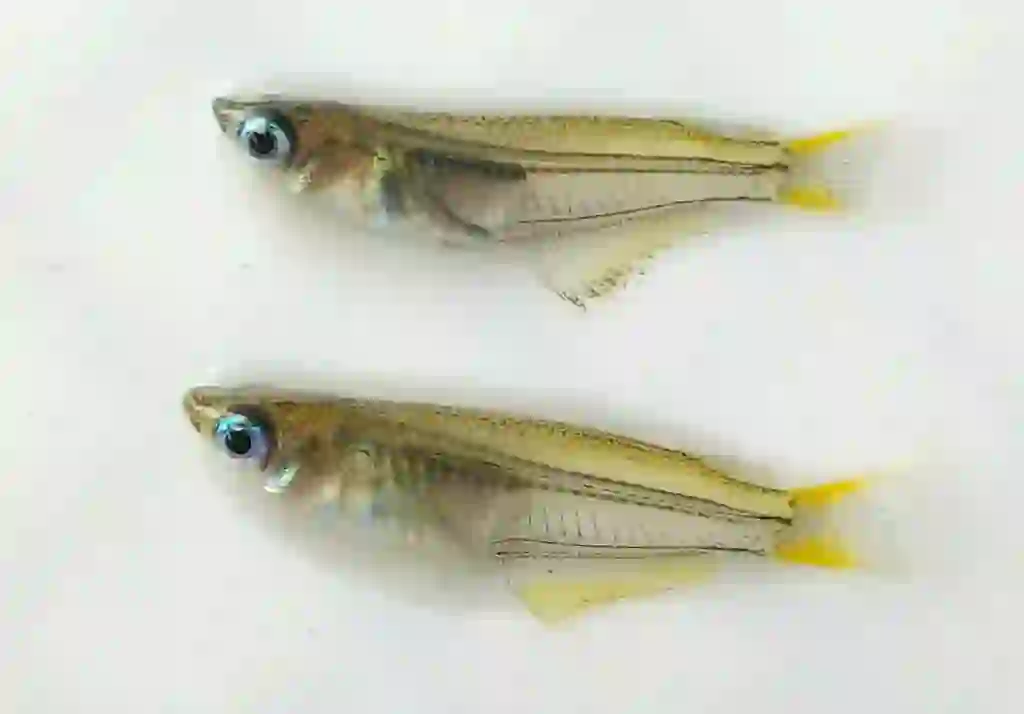
What are the differences between male and female medaka?
Female medaka tend to be slightly larger and rounder than males.
To distinguish between males and females, look at the dorsal and anal fins.
Males have notches in their dorsal fins and their anal fins are wide and long.
Females, on the other hand, have no notches in their dorsal fins and their anal fins are narrow and short.
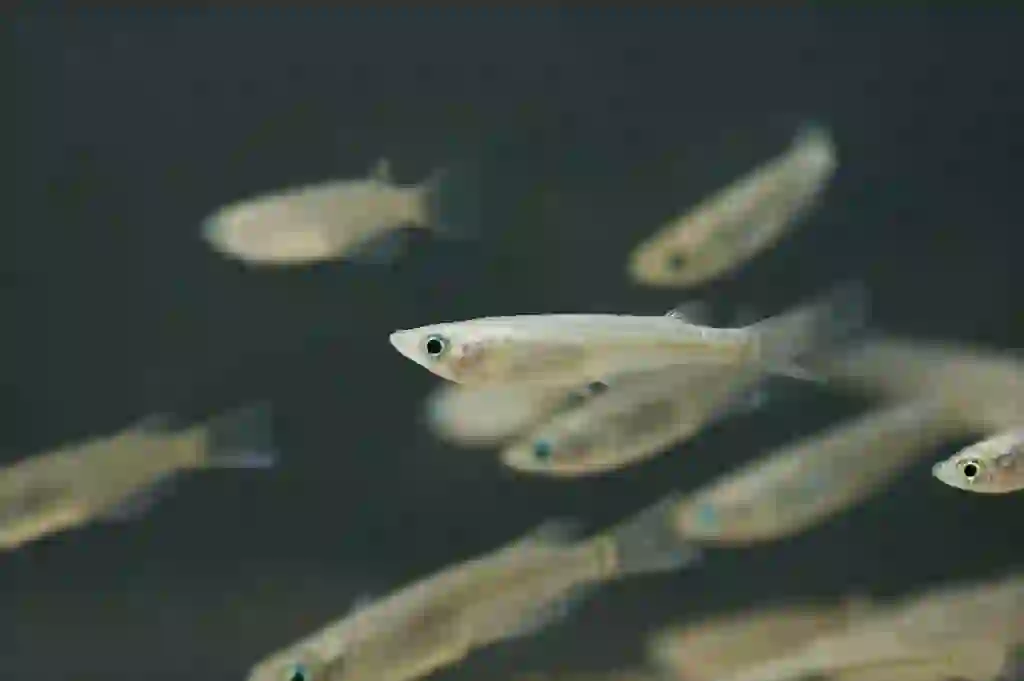
Do medaka swim in the same direction?
Medaka in rivers form groups and swim in the same direction.
This behavior is due to their instinct to swim against the current.
In the absence of flow, they swim in various directions; however, if you create a flow in the aquarium, all the medaka will swim in the same direction.
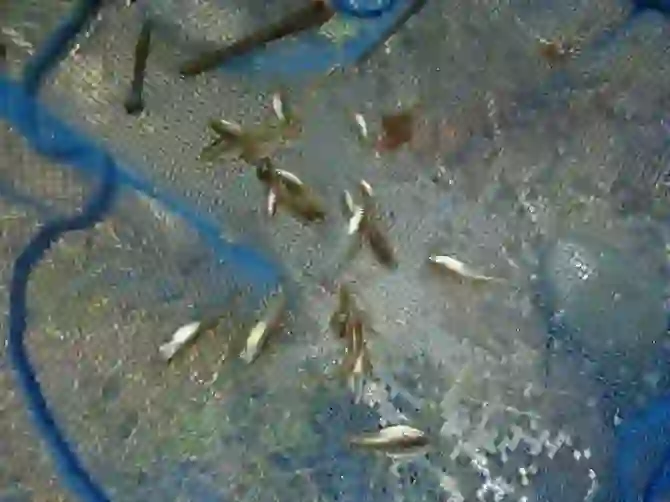
Do medaka swim in groups?
Medaka have an instinct to swim in groups against the current.
This is to be cautious of environmental changes and to avoid predators such as larger fish.
Forming groups makes it easier to spot enemies, makes them less likely to be attacked, and reduces the chance of being caught.
Furthermore, when the group is attacked, scattering can confuse the predator, giving medaka a chance to escape.
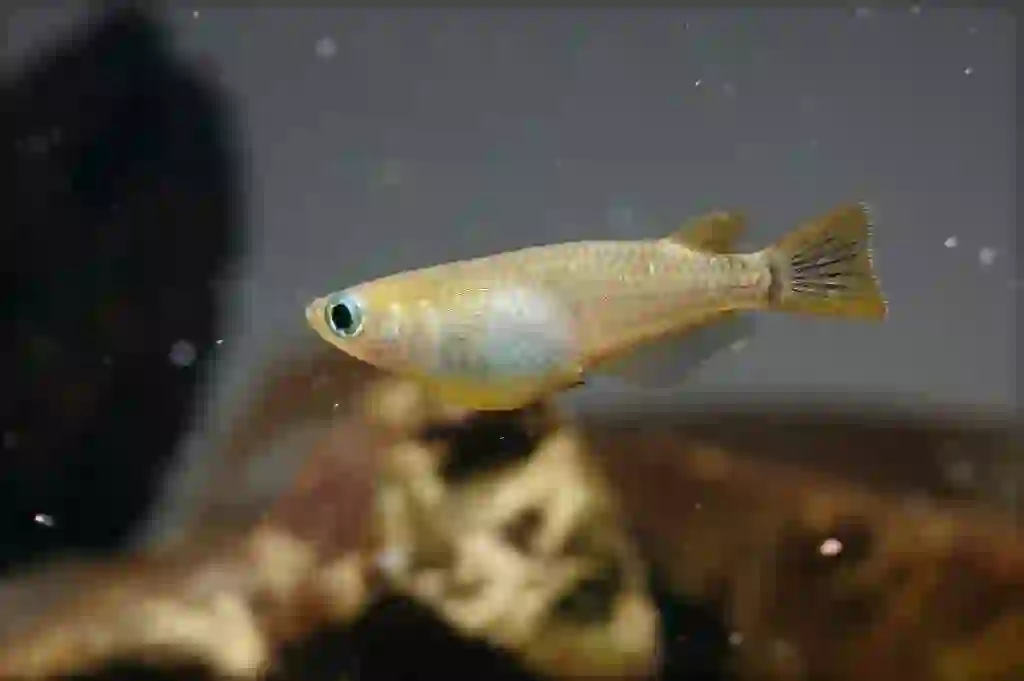
Are medaka sensitive to environmental changes?
Medaka are very cautious when placed in a new environment and will not lay eggs until they are acclimated.
If you see medaka swimming separately rather than forming groups, it is a sign that they are accustomed to their environment. Medaka are very sensitive fish.

Do medaka wake up in the morning and sleep at night?
Medaka wake up in the morning and are mostly active during daylight hours.
At night, they sleep in the aquatic plants or corners of the tank.
Even though their gills may move while they are asleep, it's worth observing closely.
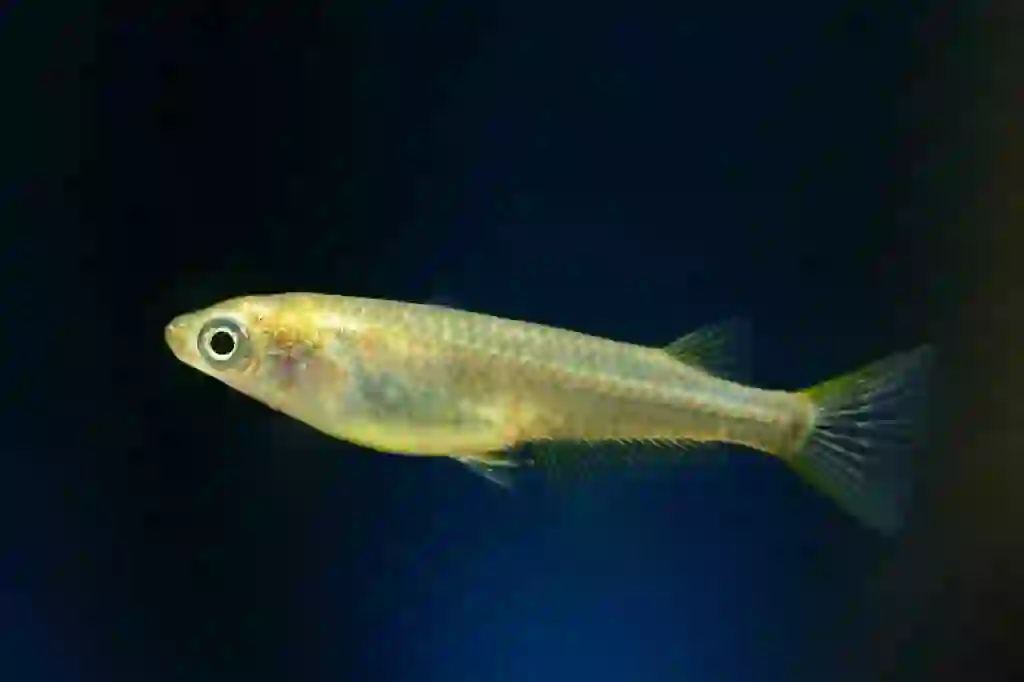
Do medaka hibernate?
Medaka become less active when the water temperature drops below 15 degrees Celsius.
At temperatures below 10 degrees, they barely eat, and at temperatures below 5 degrees, they enter a state of hibernation.
They stop moving, don't eat, and don't excrete waste.
If your medaka hibernate, avoid cleaning the tank and leave them undisturbed.
If you don't want your medaka to hibernate, you can use a thermostat heater to maintain the water temperature above 15 degrees.

Has the variety of medaka increased due to selective breeding?
When you think of medaka, you might imagine them in various colors like red, black, or glittery, which are quite pretty.
However, wild medaka are plain, with black on their backs and silver on their bellies.
The beautifully colored medaka are the result of selective breeding of spontaneously mutated medaka.
Increasingly, people enjoy creating new varieties by breeding different types of selectively bred medaka.
Selective breeding of medaka is active, with the number of varieties exceeding 500.
The main features of selective breeding include beautiful colors like vermillion, white, black, and glitter, unusual shapes like Dharma medaka, and unique traits like small eyes or large fins.

Are medaka endangered species?
Although medaka are common and seem to be everywhere, they were designated as a near-threatened species in 1992.
The designation of medaka as a near-threatened species has led to various conservation efforts. However, releasing bred medaka into rivers is controversial.
Releasing genetically different types of medaka into the wild could disrupt the ecosystem and potentially erase the genetic diversity of local populations.

Do male medaka embrace females?
Male medaka embrace females with their dorsal and anal fins during fertilization and sprinkle sperm over the eggs.
This behavior is called 'embracing'.
It sounds quite romantic, doesn't it?

Is it difficult for Dharma medaka to embrace?
As explained, medaka males embrace females during fertilization. However, Dharma medaka have protruding bellies, making it difficult for males to embrace females.
Therefore, it is quite challenging to naturally breed Dharma medaka.

Do medaka eat their own eggs?
Medaka, after laying eggs, rub them against water plants to transfer them.
Unfortunately, these eggs can become food for other medaka.
Moreover, medaka might even eat their own eggs.
If you want to hatch the eggs, it's best to move them to a separate container immediately after laying.
Also, hatchlings can be eaten by adult medaka.

What conditions trigger medaka to lay eggs?
Medaka lay eggs when the conditions of 'daylight length' and 'water temperature' are met.
They can lay eggs if the bright day lasts for 12 to 13 hours and the water temperature is above 13 degrees Celsius.
With these conditions, it is possible for medaka to lay eggs outside the spring and summer periods.
They are most active at water temperatures of 20 to 25 degrees Celsius, laying eggs daily under these conditions.

Is mass production of medaka possible?
Medaka can lay between 10 to 20 eggs at a time.
During the spawning season, they can lay eggs daily. If you find eggs, placing new water plants in the tank will encourage them to lay more the following day.
By repeating this daily during the spawning season, mass production of medaka is possible.
Prepare a separate container to transfer the eggs to keep up with the daily production.
Many people get excited about how quickly medaka can produce eggs daily.

Why can medaka lay so many eggs?
Medaka can lay eggs daily when well-nourished.
Unlike some fish species that spawn only once in their lifetime, why can medaka do it daily?
During the spawning season, a medaka's ovaries contain eggs at all stages of development.
After ovulation, the next batch of ovarian eggs is already waiting and the immature eggs continue to develop rapidly.
This is possible because medaka ovaries contain stem cells.
Stem cells have the ability to self-replicate, enabling the production of multiple ovaries.
Thus, due to the stem cell mechanism in medaka, one individual can lay several hundred eggs.

What is the lifespan of medaka?
Wild medaka can live for 2 to 3 years.
However, they can live longer in captivity where there are no natural predators.
Lifespan varies among individuals, but with proper care, they can live quite long.

Is a tank full of algae bad?
When keeping medaka, not cleaning the tank can quickly lead to an algae-covered environment.
However, a state of 'green water', which is water filled with green algae and abundant in plankton, is actually very beneficial for medaka.
Medaka eat plant plankton, so it's not necessary to be overly meticulous about changing the water frequently, making them very easy to keep.

Can medaka live in the sea?
Medaka are well-known as freshwater fish, but they can actually survive in seawater.
The difference between marine and freshwater fish lies in their adaptations to surrounding salinity.
Freshwater fish have a higher internal concentration of salts, so water tends to enter their bodies.
Marine fish continuously drink seawater and excrete it through their gills to maintain balance.
Medaka possess both abilities, allowing them to live in both rivers and the sea.

Are there regions where medaka is eaten?
In some regions, medaka has been used as a food source.
Being a common catch in rice paddies, it was valued as a source of protein.
It has been used in dishes such as simmered in sweet and soy sauce, used for broth, or mixed with eggs.
Medaka is also believed to have medicinal properties; consuming them whole is said to improve eyesight and increase breast milk production.

Is there really a medaka that costs one million yen?
While ordinary medaka often sell for a few cents each, selectively bred medaka with unique colors and shapes can fetch extremely high prices.
It's surprising to find a medaka priced at 2,000 yen, but there are even those that have been sold for one million yen.
The million-yen fish is called 'Kohaku Transparent Scale Small Eye Samurai Medaka', nicknamed 'Nobunaga'.
It features small pupils that seem to sparkle intensely, along with a stunning mix of vermillion and glittering scales.
The high price is not just for its beauty and distinctive appearance but also for the rarity and low probability of breeding, adding to its value.

Would you like to become a part of the 'Animalbook.jp'?
Turn your knowledge into Q&A and share it with the world. ※Publication will be activated after purchase. Let's share information together!
Japanese Killifish Type of List
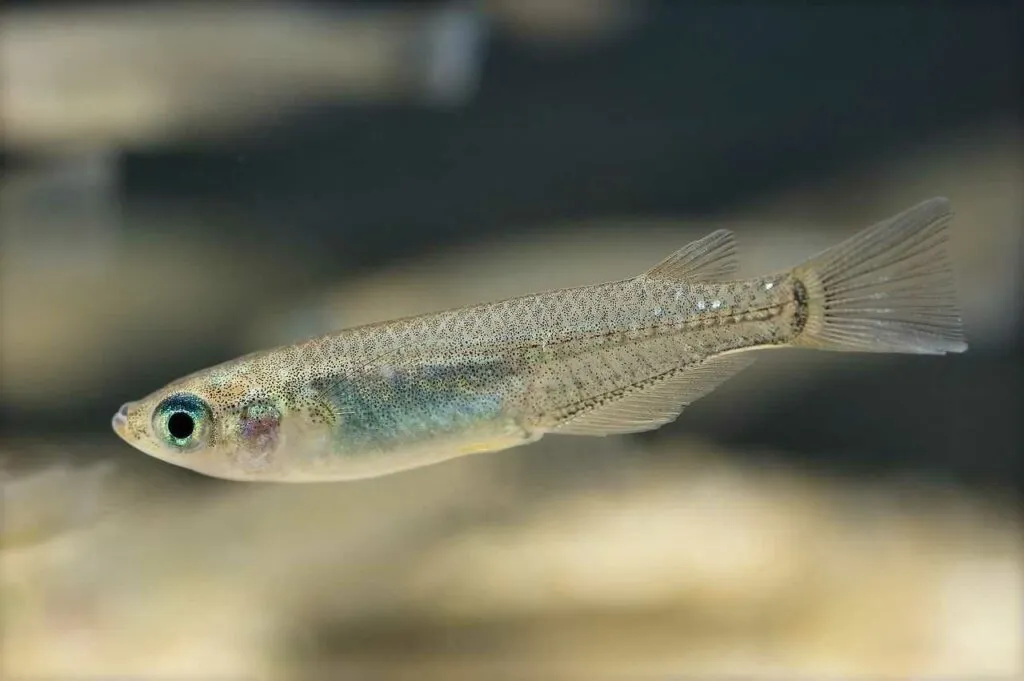
- Northern Medaka
- Southern Medaka
- Princess Medaka
- Blue-eyed Medaka
- White-eyed Medaka
- Black Medaka
- Panda Medaka
- Orochi
- Empress Medaka
- Tento Koh (Eastern Light)
- Gan no Medaka
- Sapphire
- Marriage Longfin
- Reiwa Black Glitter Gan no Sapphire Series (Reiwa Sapphire)
- Ulysses
- King Blossom・Moon Blossom
- Night Cherry Blossom
- Type Five
- Black Diamond
- Red Thistle
Information
Congratulations! You are the first commenter!

Create Your Favorite List!
Japanese Killifish
Save the animals you love! Build your own list to quickly revisit your favorites later.

Would you like to leave a comment?
※Please note: This is for the purchase of rights to post comments within the article.
Find Your Favorites!
Our shop offers a unique and attractive selection of goods themed around various animals.
Japanese Killifish References

- ・Wikipedia https://ja.wikipedia.org/wiki/メダカ
- ・メダカの飼い方.com https://medaka.papa77.com/6-002/#i
- ・クボタの田んぼ https://www.kubota.co.jp/kubotatanbo/livingthing/killifish.html#:~:text=メダカの名前の由来,が表現されています。
- ・FISH PARADISE https://fish-paradise.com/276/#i-2
- ・再生医療PORTAL https://saiseiiryo.jp/basic/detail/basic_01.html#:~:text=わたしたちはみな、自分,つの能力が不可欠です。
- ・飼える!ふやせる!メダカの本 (株)エムピージェー令和元年9月5日初版発行
- ・アクアリウム☆飼い方上手になれる!メダカ 株式会社大熊整美堂 2018年3月15日発行
- ・生きものラボ!子どもにできる おもしろ生物実験室 (株)講談社 2014年8月6日第一版
- ・なぜ?の図鑑 魚 (株)学研プラス 2016年7月12日初版第一版発行
- ・魚を飼おう!メダカ・グッピー・キンギョ・ドジョウ (株)童夢 2014年4月 第一版発行
Japanese Killifish Introduction of media used

other
出典:https://commons.wikimedia.org/wiki/File:金魚とメダカ売ってる_(20318403980).jpg

出典:https://commons.wikimedia.org/wiki/File:ミナミメダカ(馬毛島).jpg

出典:https://commons.wikimedia.org/wiki/File:Oryzias_latipes.jpg

Help Enrich Our Animalbook.jp with Your Media!
We are constantly looking to expand and enrich our Animalbook.jp with amazing photos and videos of animals. If you have any media that you'd like to share, please contribute and help us showcase the beauty and diversity of the animal kingdom. Your submissions will be credited and featured in our encyclopedia, reaching a wide audience of animal lovers.


















